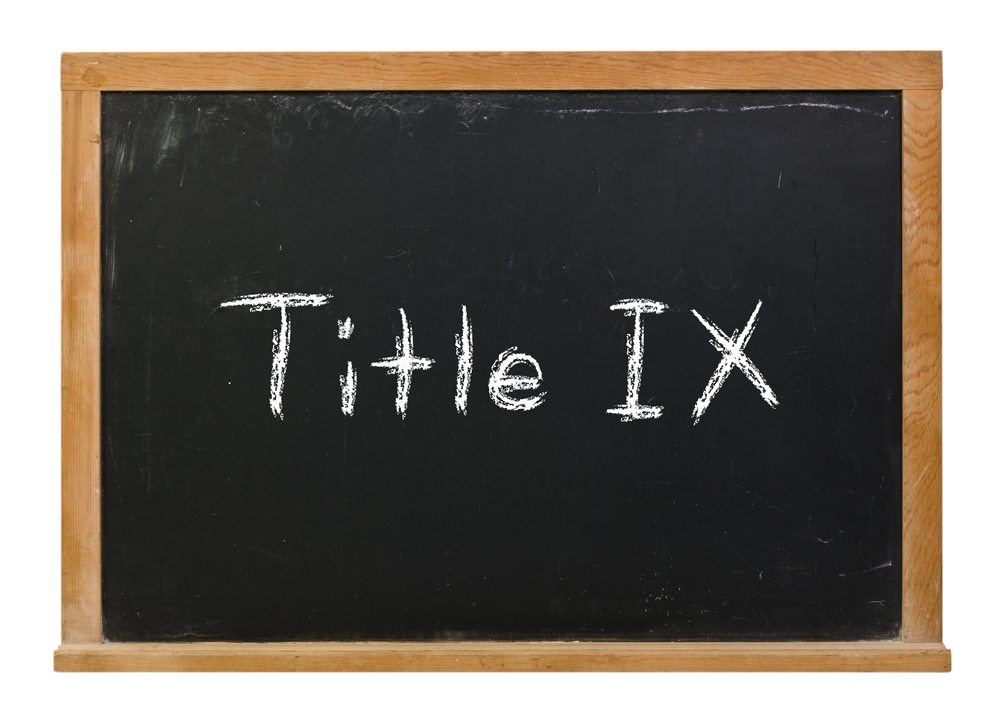Title IX: How Do Colleges and Universities Comply?
Title IX: How Do Colleges and Universities Comply?
At its core, Title IX appears to be simple – public and private schools receiving federal funding shall not discriminate against any person based on sex. And yet, in application, Title IX is far from simple. What’s more, is that there have been more drastic changes to Title IX guidelines in the last decade than in the previous forty years since its enactment. These drastic changes have left colleges and universities wondering how to comply with Title IX.
Indeed, as recently as October, Brown University found itself facing legal consequences for its’ alleged failures to comply with Title IX. Ruling on Brown’s Motion to Dismiss, a U.S. District Court Judge denied to dismiss certain claims, leaving open the possibility of an injunction that would prevent Brown’s Title IX Office from “engaging in certain practices” and “ensure that the office receives, investigates and resolves complaints,” reads the Order.
When Title IX was enacted in 1972, the goal was to bridge the gap between federal laws that failed to protect sex discrimination in educational settings. Although most attribute Title IX to its applications to collegiate athletic programs, the U.S. Supreme Court has long found that Title IX applies to any form of sex discrimination – including sexual harassment and assault. Much of the recent Title IX confusion is attributable to the contrasting guidelines released within the last 11 years relating to instances of sexual harassment.
During President Barack Obama’s presidency, his administration published two Title IX guidelines, in 2011 and 2014, which focused on schools’ obligations to investigate sexual assaults. These guidelines, however, were not codified into law.
Specifically, Obama’s administration defined sexual harassment as all “unwelcome conduct of a sexual nature,” including “requests for sexual favors, and other verbal, nonverbal, or physical conduct of a sexual nature.” The guidelines required schools to adopt the lowest burden of proof – a preponderance of the evidence standard – and created an avenue for sexual harassment complainants to appeal not-guilty findings. Previously, only a disciplined student who was found to have committed sexual harassment could appeal the ruling. Obama-era guidelines also discouraged cross-examinations of parties.
When President Donald Trump took office in 2016, his administration reversed many of his predecessor’s guidelines, specifically withdrawing the 2011 and 2014 guidelines.
In May of 2020, the Office for Civil Rights issued its final guidelines, this time codified by law. For schools looking to comply with Title IX, here are some key takeaways:
Update Definitions and Burdens
Colleges and universities must update their policies to reflect the applicable burden of proof, as it is now a clear and convincing standard. They must also update the definition of sexual harassment as it has been narrowed to “unwelcome conduct that is so severe, pervasive, and objectively offensive that it effectively denies a person equal access to a school’s educational program or activity.”
Replace Current Investigation Procedures
Schools must also follow the specifically-outlined grievance process for investigations which includes that upon receipt of a complaint of sexual harassment, the school must respond promptly in a manner that is not clearly unreasonable in light of the known circumstances. Importantly, schools are required to respond to allegations of sexual harassment that they have actual knowledge of – not constructive knowledge (i.e. allegations that they should have known about). The policies dictating the grievance procedures must include a presumption of not-guilty and state prompt time frames to resolve complaints and appeals.
Provide Pertinent Information to All Parties
Schools are required to ensure that all parties have sufficient information during the process, including knowing the applicable standard of proof, understanding the potential disciplinary actions, and recognizing the opportunities to appeal rulings. Specifically, schools must provide sufficient written notice of the sexual harassment allegations to the accused.
Take Initiative During the Investigation Phase and Conduct Hearings As Promulgated
During the investigation phase, it is the school’s burden to gather sufficient evidence to reach a determination of responsibility. The parties to the allegation must have an opportunity to present their own witnesses – usually during a hearing. For post-secondary schools, live hearings are required and schools must make available an opportunity for cross-examination of the parties and witnesses. A school can decide, however, whether to have all of the parties in the same room during these required live hearings.
More Changes May Be on the Horizon
While these are the major steps that should be taken in order to comply with the Title IX changes, this is not an exhaustive list. Schools should review the May 2020 Final Guidelines to ensure full compliance. Further, it should be cautioned, that the Department of Education under President Joe Biden’s administration has released proposed Title IX changes for public comment. As proposed, the burden of proof, the definition of sexual harassment, the requirements for a live hearings and cross-examination rules would all change. For now, schools looking to comply with Title IX rules should be cognizant of the changes suggested above, but should also be cautious that future changes may on the horizon.








